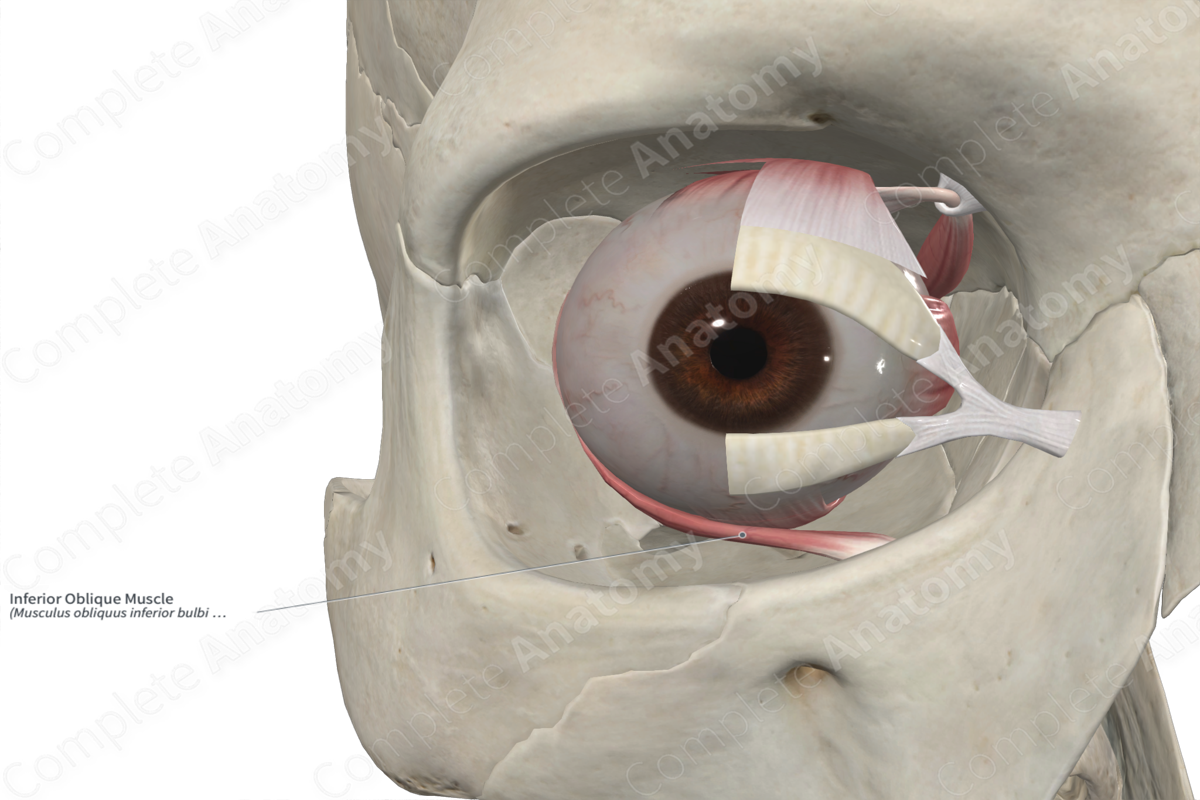
Quick Facts
Origin: Maxillary part of floor of the anterior orbit.
Insertion: Sclera on inferolateral part of posterior quadrant of eyeball.
Action: Elevates, abducts, and laterally rotates eyeball.
Innervation: Inferior branch of oculomotor nerve (CN III).
Arterial Supply: Infraorbital and ophthalmic arteries.
Origin
The inferior oblique muscle of the eye originates from the maxillary part of the floor of the orbit. It arises anteriorly from the orbital floor, lateral to the nasolacrimal fossa.
Insertion
From its origin, the inferior oblique muscle ascends posterolaterally to insert on the sclera on the inferolateral part of the posterior quadrant of the eye. It inserts onto the sclera between the inferior and lateral recti muscles, and slightly posterior to the superior oblique muscle.
Key Features & Anatomical Relations
As the inferior oblique muscle ascends posterolaterally from its insertion, it passes between the inferior rectus muscle and the orbital floor. Subsequently, it passes between the lateral rectus muscle and the eyeball itself before inserting into the sclera on the posterior surface of the eyeball.
Actions
The inferior oblique muscle directs the pupil superiorly (elevation) around the horizontal (transverse) axis. Additionally, it rotates the eye laterally (abduction) around the vertical axis and extorts the eye (lateral rotation) around the anteroposterior axis. The more adducted the eye (potentially from action of other muscles) the more elevation and the less abduction and extorsion the action of inferior oblique and vice versa.
List of Clinical Correlates
- Blowout fracture




